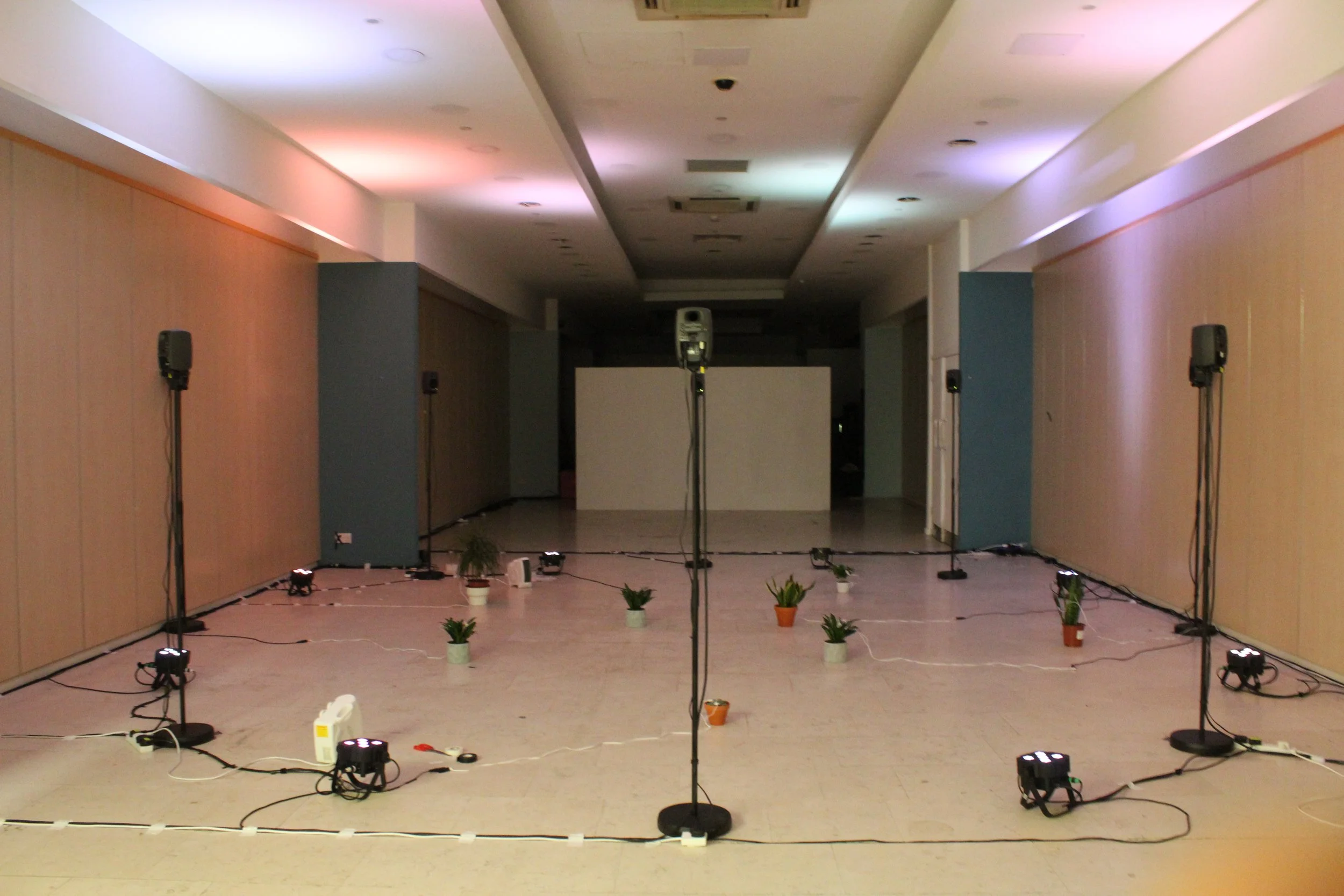
(UN)HEARD: Plant Soundings
(Un)Heard is an interactive spatial sound and light installation by Teddy Hunter. This research project plays with the idea of plant communication and plant language by making the unheard heard. These are what can be described as Plant Soundings. (Un)Heard focusses on the relationship we have with plants and the environment around us where, even subconsciously, we are constantly interacting with it.
Plants communicate by sending messages via fungi through a neural network that is an extended part of their root system. Collectively called mycelium, or a mycorrhizal network, this enables a plant or tree to become an intercommunicating forest where not only does it act as a communication system but also as a way to send nutrients to other plants and trees. Sensors are used on the plants leaves to detect the micro-voltages that a plant omit as part of the communication processes. The sensors can detect the fluctuations in values that the plant is sending out.
This sending of messages could be seen as a plant language, and although we cannot hear these messages, we can use artistic and scientific measures to imagine what this underground world might sound like. This is what will be referred to as a Plant Soundings.
A Plant Sounding is the transformation of plant language into something that is audible to us. However, there is a similar communication system happening above ground where plants are interacting with their surrounding even when not connected. A Plant Sounding is not only a way of using sound as a means to transform an unknown plant language into something we can connect to but to also understand our human presence within our environment. It allows us to understand our impact and presence within our environments by enabling us to hear how they respond to us.
This is what could be understood as a Human Sounding. A Human Sounding looks at how a humans impact and interaction can come through into a plant communication network. These interactions, whether consciously made or not, are constantly impacting the natural environment. Plants themselves make their own plant soundings, when humans start to interfere with this, this is when we start to consider human soundings.
Within my research it has been noted that people’s presence and movements affect plant behaviours. The visitor was invited to interact with the plants if they wish to see how responsive the plants are to touch. If the visitor did not wish the interact with the plants the plants would sound on their own accord. Some responded more instantly than others either which was show through light or through sound. Because of the ever changing behaviours of plants they do not respond to engagement and interaction all of the time. They each have their own characteristics and needed time to adjust to new spaces with new people.
The layout of the plants was decided by the plants due to them to interacting with each other too much and interfering with each other’s data readings that were taken from the sensors. The transformation of the plant messages into Plant Soundings also had a accompanying visual element to show that the plant was always responding to its surroundings even when not sounded. This could be seen by the constantly flickering of the light.
The installation installation uses an octo sound array to provide spatial sound and was installed in TactileBOSCH Lounge, Capitol Centre, Cardiff on the 22nd of January 2020







